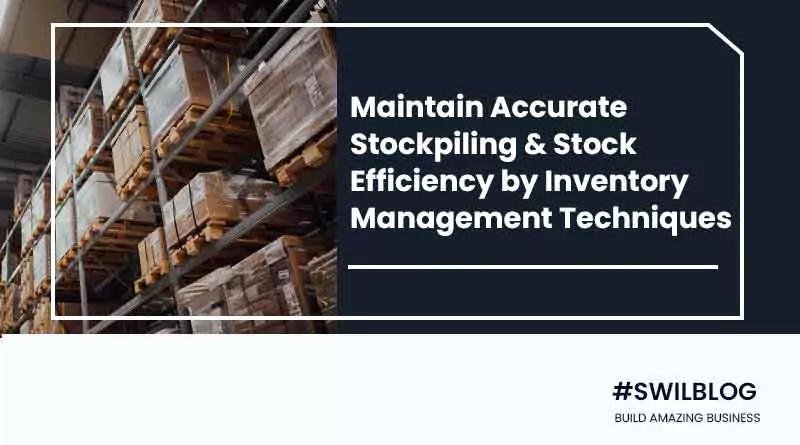Businesses need to manage their inventories. Be it tracing inconsistency in stocks, or evaluating them. It helps in every dimension of the business. There are a few inventory management techniques that can assist you in maintaining accurate stockpiling and stock efficiency. Some are :
First-in-first out (FIFO)
This technique plays an important role in inventory management. It ensures that the stock that came first is sold first. This helps to prevent spoilage or redundancy of the stock which might otherwise get unnoticed.
Bundling
Bundling is an upselling technique that brands use to persuade customers to buy more and pay more. However, it is also a great way to get rid of redundant and aging inventory. An aged inventory can lead to losses for the business and can even downgrade its reputation if sold. But tracing that beforehand can be beneficial for the business as well. For Eg- A makeup store, when upon inspection finds ceratin stocks to be aging can run a limited period offer of buy one get one free, exclusive gifts, assured gifts, or discounts to lure customers. This way not only does their customer base increase but their stock is also sold off. Besides satisfying their customers, the business owner saves on the warehousing costs as well.
Suggesting Inventory
Reports on Inventory by softwares can greatly help businesses. Reports can give insights on what is selling and what’s not. Businesses can utilize this information to communicate effectively with their suppliers on what is needed and when. By categorizing inventories into different parts, businesses can trace purchase, sell, marketing, location, and consumer behavior aspects of certain products. This further helps them to make better-informed purchase decisions in the future.
Just-in-Time
Just-in-time is a risky way to manage inventories. It involves receiving orders from suppliers only when it’s needed by the customers. This technique significantly cuts storage costs and reduces the risk associated with maintaining a large stock. This system relies completely on supply chain efficiency. It works only when you have reliable suppliers and a high standard of work. Indeed this method is extremely risky, however, the profits reaped are also the highest in this case.
Sell-through rate
The Sell-through rate is a formula that evaluates the amount of received inventory sold over a particular period of time. You can use this formula to determine the rate of inventory turnover. The formula for the same is:
Sell-through rate = ( units sold/ number of units purchased and received)*100
A good sell-through rate is between 50%-80% and above that is great. If the rate for certain inventory is higher than the other, this helps you determine your best supplier and stock investment.
Reorder point
Reorder point refers to the level at which you must replenish your stock. It is the ideal time to restock when your previous stock is just about to end. Calculating reorder points can prove to be helpful in stock management. However, when the number of products is high manually doing it can be time-consuming. Therefore, a stock management system works in this scenario.
Dropshipping
This is one of the most comfortable ways to sell. It is a method wherein sellers don’t have to maintain a stockpile of products it sells. Instead, the seller here is the mediator who purchases the item from the third party and ships it directly to the customer. This model doesn’t require any capital, skills, or overhead costs. However, it is infected with many disadvantages too like, any fault on the part of the supplier may cost your business.
ABC Inventory management
Also known as selective inventory control, stand for categorizing total inventory into different segments based on popularity. For eg- A business might segment its inventory into various segments and analyze each segment separately. With this analysis, they can optimize their warehousing space for fast-moving, popular, high-ticket products. It also helps them to plan the space accordingly. Similarly, space for slow-moving and low-margin goods can be planned accordingly. This model ensures stock turnover, and that the business makes profits even if some of its products don’t perform well. Also, the storage expenses are cut down substantially.
Why SWIL?
Managing your inventories can be a tedious and highly demanding task. If you as a business owner are solely into it, it might cost your other, more important business operations. SWIL software management team is there to help you with all your software-related issues and assistance. With our Retailgraph Inventory Management Software, any business can get a cost-effective solution for managing their stock. It comes with more advanced inventory solutions that help your business grow with speed.








